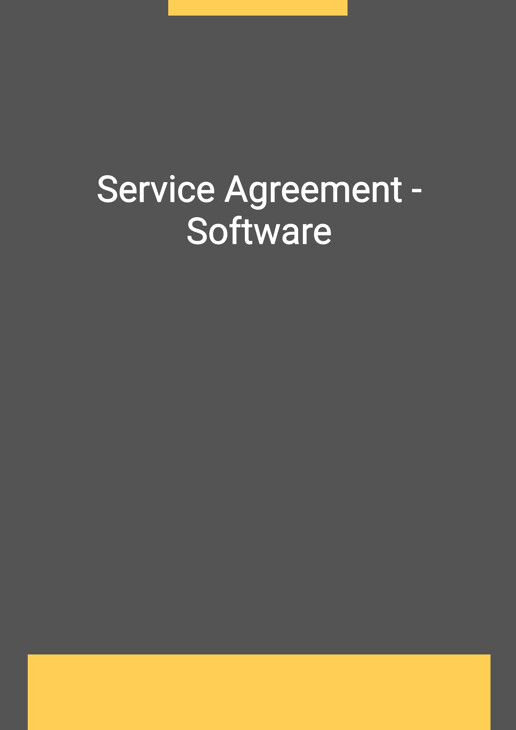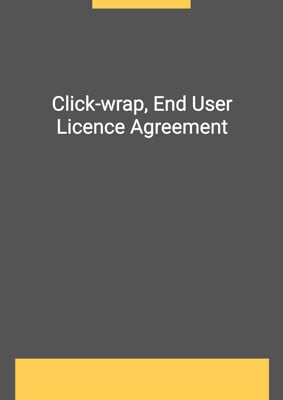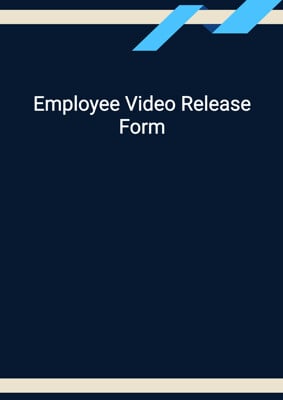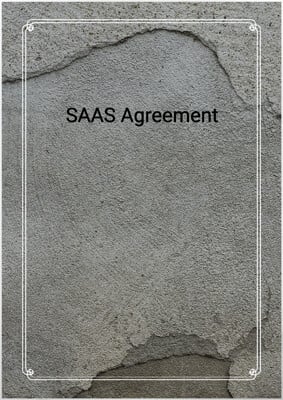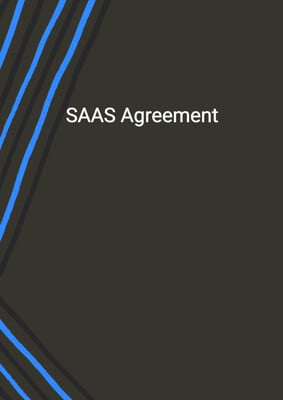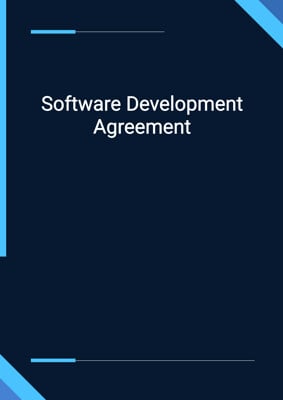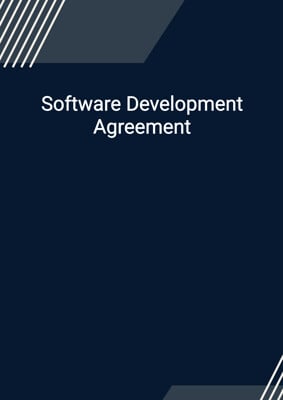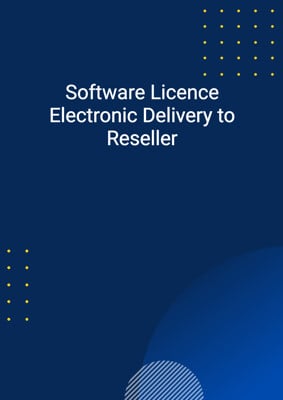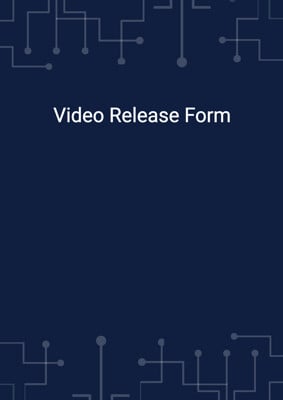How to Tailor the Document for Your Need?
01
Create Document
Fill in the details of the parties. You can click the "Fill with Member’s Information" button to complete it with information saved to your account.
02
Fill Information
Please fill in any additional information by following the step-by-step guide on the left hand side of the preview document and click the "Next" button.
03
Get Document
When you are done, click the "Get Document" button and you can download the document in Word or PDF format.
04
Review Document
Please get all parties to review the document carefully and make any final modifications to ensure that the details are correct before signing the document.
Document Preview
Document Description
The Service Agreement - Software is a legally binding document that outlines the terms and conditions between the company (referred to as Party 1) and the customer (referred to as Party 2) for the provision of software products and services. This agreement is important as it establishes the rights and obligations of both parties and ensures that there is a clear understanding of the scope of work, payment terms, and intellectual property rights.
The entire document consists of several sections, each addressing specific aspects of the agreement. The interpretation section defines key terms and provides clarity on the use of singular and plural forms, gender, and other grammatical considerations. The engagement of the company section outlines the commencement date, completion date, and the obligations of both parties during the engagement period.
The licensed software section specifies the terms of use for the software provided by the company to the customer. It outlines the customer's rights and restrictions in using the software, including copying, usage limitations, and termination conditions. The consultancy services section details the requirements for any consultancy services to be provided by the company, including the scope of services, resources required, and specifications.
The software development section covers the creation of developed software by the company based on the customer's requirements. It includes specifications, resources involved, and project plans. The system integration section addresses the supply and integration of a system by the company, including the development of software, licensing of software, and specifications for third-party software.
The acceptance section outlines the process for acceptance of products and services by the customer, including acceptance tests and the customer's right to observe or participate in the tests. The customer's obligations section specifies the customer's responsibilities, such as compliance with the license terms, payment of fees, provision of resources, and data privacy obligations.
The company's obligations section outlines the company's responsibilities, including compliance with customer directions, provision of documentation, and compliance with applicable laws. The confidential information section establishes the obligations of both parties to keep confidential information confidential and not to disclose it to third parties without proper authorization.
The ownership of intellectual property rights section clarifies the ownership of background intellectual property and intellectual property created during the agreement. It also addresses the customer's responsibilities in protecting the company's intellectual property rights and notifying the company of any infringement.
The warranties section includes warranties provided by the customer and the company, such as the customer's warranty on the use of products, non-reverse engineering of software, and compliance with intellectual property rights. The limitation of liability section limits the company's liability and outlines the customer's remedies in case of breach of warranty.
The dispute resolution section encourages the parties to resolve any disputes amicably through negotiation. The force majeure section addresses the parties' obligations and liabilities in case of events beyond their control. The termination section outlines the conditions for termination of the agreement by either party and the consequences of termination.
The notices and service section specifies the methods of communication between the parties and the addresses for service of notices. The assignment section restricts the parties from assigning or transferring their rights and obligations under the agreement without prior written consent. The payment section outlines the terms of payment for services and expenses.
The no rights under contracts for third parties section clarifies that third parties have no rights to enforce the terms of the agreement. The governing law and jurisdiction section specifies the applicable law and jurisdiction for any disputes arising from the agreement. The entire agreement section confirms that the agreement contains the entire understanding between the parties and supersedes any prior agreements.
The appendix section includes contract details, such as the products and services to be provided, deliverables, service level terms, technical support terms, and a fee appendix that outlines the rates and costs associated with the agreement.
How to use this document?
To use the Service Agreement - Software effectively, follow these steps:
1. Understand the importance: Recognize the significance of the agreement in establishing the rights and obligations of both parties and ensuring a clear understanding of the scope of work, payment terms, and intellectual property rights.
2. Familiarize yourself with the document: Read the entire agreement carefully, paying attention to each section and its specific provisions.
3. Interpretation: Understand the definitions provided in the interpretation section to ensure a common understanding of key terms used throughout the agreement.
4. Engagement of the company: Note the commencement date, completion date, and the obligations of both parties during the engagement period.
5. Licensed software: Review the terms of use for the software provided by the company, including any restrictions and termination conditions.
6. Consultancy services: Understand the requirements for any consultancy services to be provided by the company, including the scope of services, resources required, and specifications.
7. Software development: Familiarize yourself with the process for the creation of developed software based on the customer's requirements, including specifications, resources involved, and project plans.
8. System integration: Note the details of the supply and integration of a system, including the development and licensing of software, as well as specifications for third-party software.
9. Acceptance: Understand the process for acceptance of products and services by the customer, including acceptance tests and the customer's right to observe or participate in the tests.
10. Customer's obligations: Ensure compliance with the customer's responsibilities, such as compliance with license terms, payment of fees, provision of resources, and data privacy obligations.
11. Company's obligations: Understand the company's responsibilities, including compliance with customer directions, provision of documentation, and compliance with applicable laws.
12. Confidential information: Take necessary measures to keep confidential information confidential and avoid unauthorized disclosure.
13. Ownership of intellectual property rights: Understand the ownership rights of background intellectual property and intellectual property created during the agreement.
14. Warranties: Be aware of the warranties provided by the customer and the company, and ensure compliance with the specified terms.
15. Limitation of liability: Understand the limitations of liability and the customer's remedies in case of breach of warranty.
16. Dispute resolution: Attempt to resolve any disputes amicably through negotiation.
17. Termination: Familiarize yourself with the conditions for termination and the consequences of termination.
18. Notices and service: Follow the specified methods of communication and ensure proper service of notices.
19. Payment: Adhere to the terms of payment for services and expenses.
20. No rights under contracts for third parties: Understand that third parties have no rights to enforce the terms of the agreement.
21. Governing law and jurisdiction: Recognize the applicable law and jurisdiction for any disputes arising from the agreement.
22. Entire agreement: Confirm that the agreement contains the entire understanding between the parties and supersedes any prior agreements.
By following these steps, you can effectively use the Service Agreement - Software and ensure compliance with its provisions.
Not the right document?
Don’t worry, we have thousands of documents for you to choose from:
